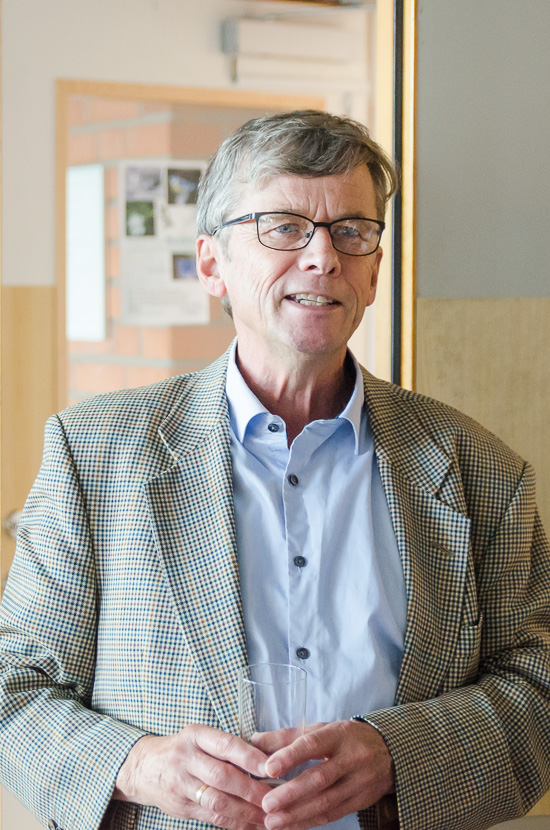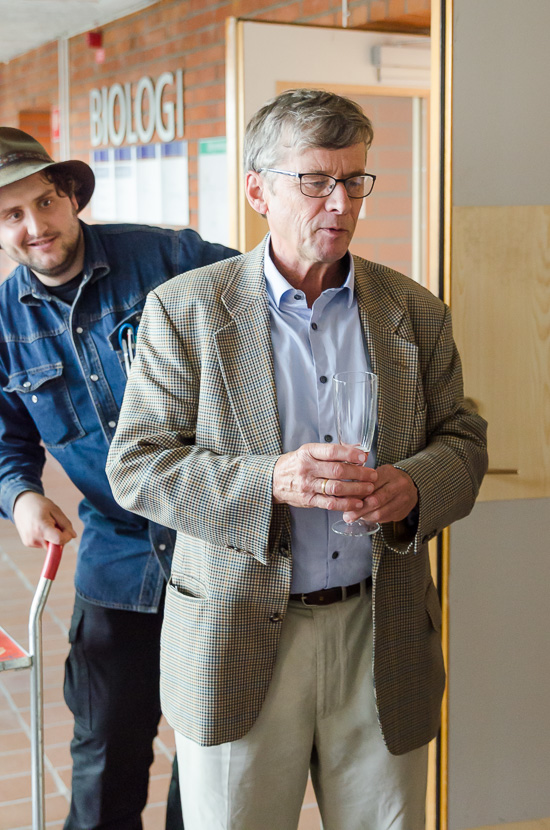
Last Friday afternoon Bengt Olle Bengtsson had arranged a seminar on account of Bengt Lidforss 150 years anniversary.
Bengt Olle greeted the audience welcome on behalf of the Departement of Biology and the Mendelian Society. Lidforss has been given much attention as a political intellectual and as a literary figure of importance. It is now time to recognize him as a biologist. Here his interests were wide, up-to-date, and concentrated on the dynamic – rather than the systematic – aspects of life.
Allan Rasmusson spoke about frost-tolerance in plants and about Lidforss’ ground-breaking studies in the field. He was the first to realize that plant cells use sugars to help avoid damaging ice needle formation, and that plant cells – when the temperature falls – break down starch deposits in order to increase the sugar level.
Olivier Van Aken introduced some of the ways that plants use to react – sometimes with actual movements – to physical stimulus, despite their lack of muscle and nerve cells.
Carin Jarl-Sunesson described the incredible growth-abilities of pollen tubes. Lidforss tried to find what the attractant is that makes pollen tubes grow in the right direction. An excellent question, but it was only about ten years ago that it obtained a satisfactory molecular answer.
Klas Flärdh told the story about how Lidforss found some gigantic bacteria in the pond in the Botanical Garden, and published a study of their hectic movements. Lidforss found them to be attracted to a wide range of compounds, but he couldn’t cultivate the bacteria, and no-one has followed up his research in this field. So, again we have a good biological question, some interesting early results, but no definite answer.
Hilde Nybom made a summary of Lidforss’ extensive studies of blackberries, Rubus. Due to the existence of incomplete asexuality in the genus, it appears as if the rate of speciation is high in the group. Lidforss made extensive crossing-studies, and Hilde showed the range of results that Lidforss obtained. Unfortunately, Lidforss died – only 45 years old – before he had time to properly sum up his results.
Lidforss was not only a good biological researcher, but also an eminent science populariser. Torbjörn Säll looked at the two articles, from 1902 and 1912, where Lidforss introduced Mendel’s result to a Swedish audience. Torbjörn’s conclusions were that the descriptions Lidforss gave were correct, perhaps somewhat limited (nothing for example about chromosomes!), and with a – for us today – surprising openness for the inheritance of acquired characteristics.
The speakers were thanked for their interesting presentations. Then Bengt came with two surprises: The Biology Department has been given a number of copies of the book ”Bortom det acceptablas gränser” that Bengt, together with Gunnar Broberg, has edited and written about Lidforss, and all in the audience were given a copy. Secondly, Bengt described the recipe for the newly invented cocktail, ”Lidforss” – pour some Crème de mûre (blackberry liqueur) in a tall glass and fill up with cold, dry, French bubbling cider. The result is like a Kir Royal, but with blackberry flavour and less alcohol.
The audience appreciated the presentations, enjoyed the book gift, and found the cocktail refreshing.
Text by Bengt Olle Bengtsson
Photo by Inger Ekström




